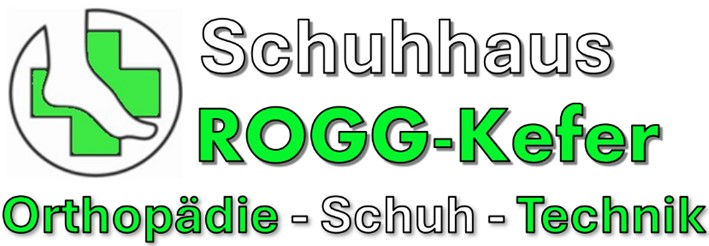In some instances, the balance sheet may have it aggregated with the accumulated depreciation line, in which only the net balance is reflected. It means the balance of the assets will decrease in order to increase the expense. However, it is a which journal entry records the amortization of an expense bit complicated as we will not credit assets balance directly. We create another account which is the accumulated amortization to be the contra account of the intangible assets. When this account balance increases, it will decrease the assets’ net book value on balance sheet. The reported balance of intangibles will decrease, but we can still see the original cost.
- It reduces net income, which in turn affects profitability ratios such as return on assets (ROA) and return on equity (ROE).
- Amortization is recorded by setting up a sub or contra-account under your Main asset called Accumulated Amortization.
- Eventually, the intangible asset will have zero remaining cost, meaning it’s fully amortized.
- Once companies determine the principal and interest payment values, they can use the following journal entry to record amortization expenses for loans.
- Ensure that amortization expense is accurately recorded by reviewing the intangible asset’s useful life and estimated salvage value.
- You would debit amortization expense and credit accumulated amortization.
There are various types of assets that companies use in daily operations to generate revenues. Among these are fixed assets, which they use in the long run to generate revenues. The calculation for amortization expense typically involves dividing the initial cost or carrying value of the asset by its estimated useful life. This determines how much should be recognized as an expense in each reporting period. This method, also known as the reducing balance method, applies an amortization rate on the remaining book value to calculate the declining value of expenses.
How does amortization expense impact financial statements?
You record each payment as an expense, not the entire cost of the loan at once. When purchasing a patent, a company records it in the Patents account at cost. The amortization expense increases (debit) by $1,000 as the value of the license declines by $1,000 with the increase (credit) of the accumulated amortization. Likewise, the net book value of the license as of December 31, 2020, is $9,000 (10,000 – 1,000). Amortization expense is the income statement item that represents the allocated cost of the intangible asset for the period.
Journal Entry for Amortization of Patent
Moreover, on the balance sheet, accumulated depreciation and amortization are subtracted from their respective asset accounts to determine their net book value. This adjustment reflects how much of an asset’s initial cost has been allocated over time. On the income statement, amortization expense appears as a separate line item, reducing overall net income.
Understanding the interaction between tax regulations and accounting standards is critical for effective financial planning. This approach ensures an accurate representation of the entity’s financial position at the time of the transaction. Intangible assets are purchased, versus developed internally, and have a useful life of at least one accounting period.
Journal Entry for Accumulated Amortization
It should be noted that if an intangible asset is deemed to have an indefinite life, then that asset is not amortized. If so, you would /should have Debited the Asset account, and Credited the Bank account. Amortization is recorded by setting up a sub or contra-account under your Main asset called Accumulated Amortization. There are several steps to follow when calculating amortization for intangible assets.
How To Determine Marginal Cost, Marginal Revenue, And Marginal Profit In Economics
It must also split the amount into the principal and interest components. As mentioned, this information is readily available from the amortization schedule. Nonetheless, the journal entries for the amortization of loans will be as follows. Goodwill in accounting refers to the intangible value of a business that is above and beyond its tangible assets, such as equipment or inventory. It represents the reputation, customer base, and other non-physical assets contributing to the business’s value.
The annual journal entry is a debit of $10,000 to the amortization expense account and a credit of $10,000 to the accumulated amortization account. Assuming you understand how to calculate the annual amortization expense, the journal entry to record the expense is straight-forward. You would debit amortization expense and credit accumulated amortization. The company has to calculate the amortization expense based on the intangible assets value and its define useful life. They simply allocate the total cost of intangible assets from balance sheet to the expense on income statement. On the balance sheet, as a contra account, will be the accumulated amortization account.
This balance represents the total amount of the intangible asset that has been expensed. Eventually, the intangible asset will have zero remaining cost, meaning it’s fully amortized. An accumulated amortization account is a contra-asset account, which is a type of contra account. This means that it offsets the value of the intangible asset account on the balance sheet. Calculating interest expense involves understanding the mortgage terms, including the interest rate, principal amount, and payment schedule. The effective interest rate method is commonly used to amortize interest expense, ensuring a consistent rate of interest over the loan’s life.
As interest accumulates on outstanding debts, it must be accounted for even if payment has not yet been made. This aligns with the revenue recognition principle, which mandates recognizing expenses in the period they are incurred. Amortization in accounting is a technique that is used to gradually write-down the cost of an intangible asset over its expected period of use or, in other words, useful life. This shifts the asset to the income statement from the balance sheet.
Prepayments and refinancing can alter a borrower’s financial situation significantly. Prepayments reduce the principal balance and overall interest obligation, while refinancing replaces an existing mortgage with a new one, often to secure better terms. Gain financial clarity with our guide on mortgage journal entries, covering loan proceeds, interest, amortization, and more. For instance, borrowers must be financially prepared for the large amount due at the end of a balloon loan tenure, and a balloon payment loan can be hard to refinance.
The company can make the amortization expense journal entry by debiting the amortization expense account and crediting the accumulated amortization account. At the same time, its Balance Sheet will report an intangible asset of $8,000 ($10,000 – $2,000). The interest expense here results in an increase in a company’s overall expenses in the Income Statement. The debit to the loan account, with the principal value, reduces the value of the loan in the Balance Sheet. The difference between amortization and depreciation is that depreciation is used on tangible assets.
Show the entry for amortization expense charged each year on the patent. For loans, it helps companies reduce the loan amount with each payment. The accounting treatment for amortization is straightforward, as stated above. With the above information, use the amortization expense formula to find the journal entry amount.




